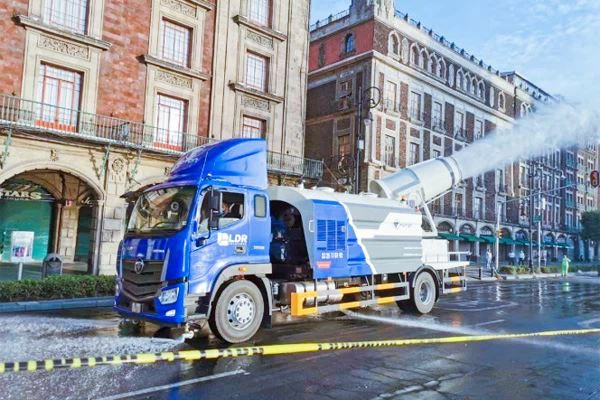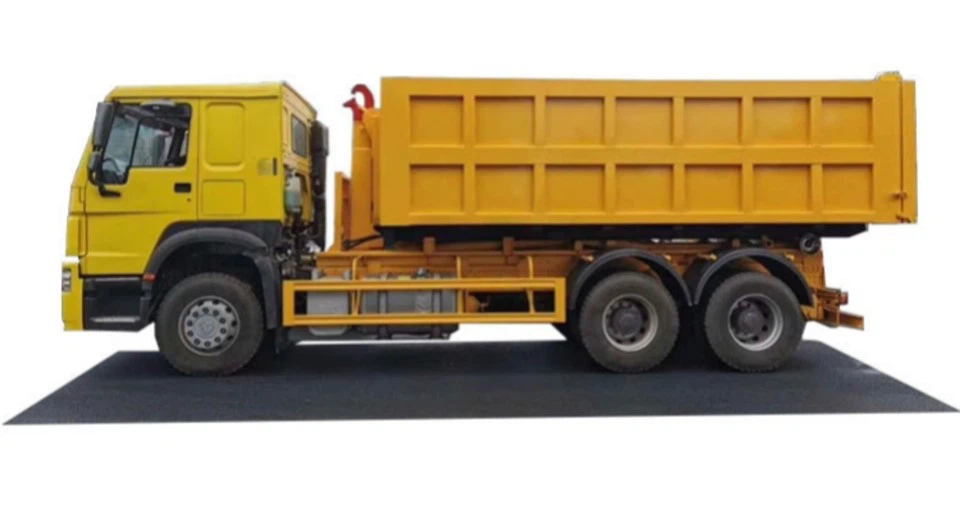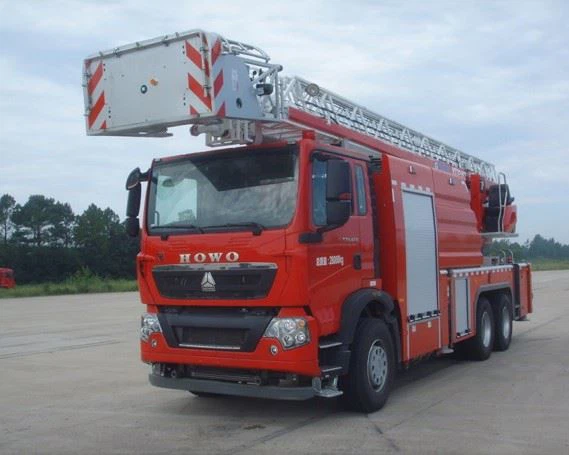Understanding Fuel Tanker Trucks: The Essential Guide

Introduction to Fuel Tanker Trucks
Fuel tanker trucks are a crucial part of the logistics and transportation industry, providing the means to transport petroleum products safely and efficiently. These specialized vehicles come in various shapes and sizes and are equipped with advanced technology to ensure that they meet safety regulations while delivering fuel to various destinations, from gas stations to industrial facilities. In this article, we will explore the different types of fuel tanker trucks, their features, safety regulations, operational tips, and much more. This comprehensive guide aims to provide insight into this essential mode of transportation.
Types of Fuel Tanker Trucks
1. Standard Fuel Tankers
Standard fuel tanker trucks are designed to transport gasoline and diesel fuels. These are the most common type of tanker trucks seen on highways, typically with a carrying capacity ranging from 5,000 to 11,000 gallons.
2. Specialty Tankers
Specialty tankers are designed to transport specific types of fuels, such as jet fuel or biodiesel. These tankers often come with specialized equipment to handle the unique characteristics of the fuel they carry.
3. Insulated Tankers
Insulated tankers are used to transport fuels that need to maintain a specific temperature, such as liquefied natural gas (LNG). The insulated design helps prevent temperature fluctuations during transit, ensuring fuel quality.
4. Baffled Tankers
Baffled tankers are equipped with internal baffles that reduce the movement of fuel within the tank. This design helps to stabilize the truck during transport, enhancing safety and handling.
5. Multi-compartment Tankers
Multi-compartment tankers can carry different types of fuel simultaneously without mixing them. This versatility is advantageous for fuel distributors who serve various customers with distinct needs.
Key Features of Fuel Tanker Trucks
1. Tank Construction Materials
Most fuel tanker trucks are made from durable materials such as aluminum or stainless steel. These materials offer corrosion resistance and strength, which are crucial for transporting hazardous liquids.
2. Safety Equipment
Safety is a primary concern in transporting fuel. Fuel tanker trucks are equipped with emergency shut-off valves, spill containment systems, and fire extinguishers to handle potential emergencies effectively.
3. Loading and Unloading Systems
Modern fuel tanker trucks utilize advanced loading and unloading systems, including pumps and meters for precise delivery. These systems help reduce spillage and improve accuracy in fuel distribution.

4. Tracking and Monitoring Technology
Many fuel tanker trucks are outfitted with GPS tracking and monitoring systems. This technology allows fleet managers to oversee routes and fuel usage in real-time, enhancing operational efficiency.
Safety Regulations for Fuel Tanker Trucks
1. Federal Regulations
In the U.S., the Department of Transportation (DOT) has established regulations governing the safe transportation of hazardous materials, including fuel. Compliance with these regulations is mandatory for all fuel tanker operators.
2. Driver Training and Certification
Drivers must undergo specialized training and obtain a Commercial Driver’s License (CDL) with a hazardous materials endorsement to handle fuel tanker trucks. Proper training reduces the risk of accidents and improves safety during transport.
3. Regular Inspections
Fuel tanker trucks are subject to regular inspections to ensure their safety features are operational. These inspections include checking for leaks, structural integrity, and proper functioning of safety equipment.
4. Spill Response Plans
Companies that operate fuel tanker trucks must have comprehensive spill response plans in place. These plans outline procedures for containing and cleaning up spills to mitigate environmental impacts.
Operational Tips for Fuel Transport
1. Route Planning
Careful route planning is crucial for fuel tanker operations. Consider factors like traffic patterns, road conditions, and proximity to emergency services when determining the best routes.
2. Fuel Efficient Driving Practices
Adopting fuel-efficient driving practices not only saves money but also reduces emissions. Practices such as maintaining a steady speed, minimizing idling, and limiting rapid accelerations contribute to overall fuel efficiency.
3. Maintaining Equipment
Regular maintenance of fuel tanker trucks is essential. Operators should create a maintenance schedule that includes checks on brakes, tires, pumps, and unloading systems to prevent mechanical failures during transit.
The Environmental Impact of Fuel Tanker Trucks
1. Emissions and Pollution
Despite advancements in technology, fuel tanker trucks emit greenhouse gases that contribute to air pollution. Modern fuel trucks are being designed to minimize these emissions, incorporating cleaner engines and better fuel types.

2. Spill Prevention Strategies
To mitigate environmental hazards, companies must implement rigorous spill prevention strategies. This includes adhering to safety regulations and conducting regular training for drivers on emergency procedures.
3. Transition to Alternative Fuels
The transportation industry is exploring alternative fuels like electricity and hydrogen to reduce reliance on fossil fuels. Innovative fuel tanker designs are emerging to support this transition and meet future energy demands.
Common Challenges Faced by Fuel Tanker Operators
1. Regulatory Compliance
Staying compliant with ever-changing regulations can be a challenge for fuel tanker operators. It is necessary to stay updated with federal, state, and local laws that govern fuel transportation.
2. Economic Fluctuations
The price of fuel fluctuates due to market conditions, affecting operational costs. Operators must strategically manage expenses and pricing models to ensure profitability during downturns.
3. Training and Retention of Skilled Drivers
Hiring and retaining qualified drivers is critical in the fuel transportation sector. Offering competitive wages, benefits, and ongoing training can help attract and keep skilled personnel.
Future Trends in Fuel Tanker Transportation
1. Technological Advancements
The integration of AI and IoT technologies in fuel tanker operations is revolutionizing the industry. These technologies offer enhanced route optimization, predictive maintenance, and improved safety measures.
2. Sustainability Initiatives
With increasing focus on sustainability, many companies are adopting green practices in their operations. This includes exploring electric or hybrid fuel tankers and investing in carbon offset programs.
3. The Impact of Electric Trucks
The rise of electric trucks in the logistics sector is beginning to affect the fuel tanker industry. As battery technology mejoras and infrastructure develops, electric fuel tankers may become a viable option for reducing emissions.

FAQs about Fuel Tanker Trucks
1. What is the average capacity of a fuel tanker truck?
The average fuel tanker truck has a capacity of between 5,000 and 11,000 gallons, depending on its design and purpose.
2. How do fuel tanker trucks ensure safety during transportation?
Fuel tanker trucks use safety equipment like emergency shut-off valves, advanced monitoring systems, and regular inspections to ensure safety during transportation.
3. Are there specific driver qualifications for operating fuel tanker trucks?
Yes, drivers must possess a Commercial Driver’s License (CDL) with a hazardous materials endorsement and undergo specialized training to operate fuel tanker trucks safely.
4. What are the environmental impacts of fuel tanker trucks?
Fuel tanker trucks can contribute to air pollution and greenhouse gas emissions. Companies are implementing spill prevention strategies and exploring alternative fuels to mitigate these impacts.
5. How can companies improve fuel efficiency in tanker operations?
Companies can improve fuel efficiency by planning optimal routes, adopting fuel-efficient driving practices, and conducting regular vehicle maintenance.
6. What are some emerging trends in fuel tanker transportation?
Emerging trends include the integration of AI and IoT technologies, increased sustainability initiatives, and the introduction of electric fuel tankers in the market.
